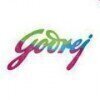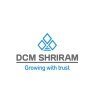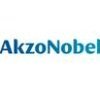Filter interviews by
Bodal Chemicals Interview Questions and Answers
20 Interview questions
Distillation separates components based on boiling points, with various methods tailored for specific applications.
1. Simple Distillation: Used for separating liquids with significantly different boiling points (e.g., water from salt).
2. Fractional Distillation: Separates mixtures with closer boiling points (e.g., crude oil into gasoline, diesel).
3. Vacuum Distillation: Lowers boiling points by reducing pressure, ...
Preventing fouling involves strategies to minimize deposits on surfaces in chemical processes, enhancing efficiency and longevity.
Regular cleaning schedules to remove deposits, e.g., using chemical cleaners in heat exchangers.
Use of anti-fouling coatings on surfaces to reduce adhesion of foulants.
Optimizing flow rates to minimize stagnant zones where fouling can occur.
Implementing filtration systems to remove part...
A distillation diagram illustrates the separation of components in a mixture based on boiling points.
1. Distillation Column: The main component where vaporization and condensation occur, separating components based on boiling points.
2. Reboiler: Heats the liquid mixture to create vapor, providing the necessary energy for distillation.
3. Condenser: Cools the vapor back into liquid, allowing for collection of the di...
Calculate the diameter of a pump using flow rate and velocity with the formula Q = A * V.
Use the formula Q = A * V, where Q is flow rate, A is cross-sectional area, and V is velocity.
Rearrange the formula to find A: A = Q / V.
The area A can be expressed in terms of diameter: A = π * (D/2)^2.
Combine the equations: D = 2 * sqrt(Q / (π * V)).
Example: If Q = 0.1 m³/s and V = 2 m/s, then D = 2 * sqrt(0.1 / (π * 2)).
Pump flowrate calculation involves using the formula Q= ha
Calculate the flow rate (Q) by multiplying the head (h) by the area of the pipe (a)
Ensure units are consistent (e.g. meters for head and square meters for area)
Consider factors like friction loss and pump efficiency in the calculation
Pump flow rate can be calculated by multiplying the pump's displacement per revolution by the pump's speed.
Calculate the pump's displacement per revolution (in cubic inches or cubic centimeters)
Determine the pump's speed (in revolutions per minute)
Multiply the displacement per revolution by the speed to get the flow rate (in cubic inches or cubic centimeters per minute)
PHE heat load can be calculated by considering the flow rate, specific heat capacity, and temperature difference of the fluids involved.
Calculate the mass flow rate of the fluids passing through the Plate Heat Exchanger (PHE).
Determine the specific heat capacity of the fluids.
Find the temperature difference between the hot and cold fluids.
Use the formula: Q = m * Cp * ΔT, where Q is the heat load, m is the mass fl...
Heat transfer is the process of energy moving from a warmer object to a cooler object.
Heat transfer can occur through conduction, convection, or radiation.
Conduction is the transfer of heat through direct contact between materials, like a metal spoon heating up in hot soup.
Convection is the transfer of heat through the movement of fluids, like boiling water in a pot.
Radiation is the transfer of heat through electr...
The two laws of thermodynamics are the first law, which states that energy cannot be created or destroyed, only transferred or converted, and the second law, which states that the entropy of an isolated system always increases over time.
First law of thermodynamics: Energy cannot be created or destroyed, only transferred or converted.
Second law of thermodynamics: The entropy of an isolated system always increases o...
DP type LT stands for Differential Pressure type Level Transmitter used for measuring level in tanks or vessels.
DP type LT measures level by detecting the pressure difference between two points in a vessel.
It consists of two pressure sensors connected to the top and bottom of the tank.
The configuration involves setting the zero and span points to calibrate the transmitter.
Commonly used in industries like oil & gas...
Bodal Chemicals Interview Experiences
15 interviews found
(3 Questions)
- Q1. MASS FLOWMETER CALIBRATION
- Q2. DP TYPE LT working and configuration
- Ans.
DP type LT stands for Differential Pressure type Level Transmitter used for measuring level in tanks or vessels.
DP type LT measures level by detecting the pressure difference between two points in a vessel.
It consists of two pressure sensors connected to the top and bottom of the tank.
The configuration involves setting the zero and span points to calibrate the transmitter.
Commonly used in industries like oil & gas, che...
- Q3. Installation of DPT IN STEAM LINE
- Ans.
Installation of DPT in steam line involves proper mounting, calibration, and protection against high temperatures.
Ensure proper mounting of the differential pressure transmitter (DPT) in the steam line to accurately measure pressure difference.
Calibrate the DPT regularly to maintain accuracy in steam pressure readings.
Use heat-resistant materials and insulation to protect the DPT from high temperatures in the steam lin...
(2 Questions)
- Q1. Family background
- Q2. Salary discussion
Interview Preparation Tips
Skills evaluated in this interview
I applied via Campus Placement and was interviewed in Feb 2024. There was 1 interview round.
(6 Questions)
- Q1. Introduce your self ,what you learned in internship
- Ans.
I am a recent graduate with a strong academic background in chemical engineering. During my internship, I learned about process optimization, data analysis, and safety protocols.
Learned about process optimization techniques such as heat integration and material balance calculations
Gained experience in data analysis using software like MATLAB and Excel
Understood the importance of following safety protocols in a chemical...
- Q2. Type of reboiler
- Ans.
A reboiler is a heat exchanger used in a distillation column to generate vapor from the liquid feed at the bottom of the column.
Reboilers can be classified into different types such as kettle reboilers, thermosiphon reboilers, and forced circulation reboilers.
The type of reboiler used depends on factors like the properties of the feed, desired product purity, and energy efficiency.
For example, a kettle reboiler is comm...
- Q3. Logarithmic temperature difference ( counter current & co current graph )
- Ans.
Logarithmic temperature difference is used to analyze heat exchangers in counter current and co current flow. Graph shows efficiency vs temperature difference.
Logarithmic temperature difference is a method to analyze heat exchangers in counter current and co current flow
In counter current flow, the temperature difference decreases along the length of the exchanger, resulting in a steeper curve on the graph
In co current...
- Q4. Pump flowrate calculation ( Q= ha
- Ans.
Pump flowrate calculation involves using the formula Q= ha
Calculate the flow rate (Q) by multiplying the head (h) by the area of the pipe (a)
Ensure units are consistent (e.g. meters for head and square meters for area)
Consider factors like friction loss and pump efficiency in the calculation
- Q5. Bernoulli equation
- Q6. Reynold number application
Interview Preparation Tips
- Heat Transfer
- Mass Transfer
- Fluid Mechanics
In heat transfer LMTD, types of reboiler, definition of mass transfer & diffusion, pump flow rate calculation ( Q=av) , Bernoulli equation that's it , if you have average knowledge they'll still hire you bcz they aren't giving exceptionally high salary so don't worry much just prepare best and best of luck ,no need to be nervous
(2 Questions)
- Q1. How to calculate pump flow rate
- Ans.
Pump flow rate can be calculated by multiplying the pump's displacement per revolution by the pump's speed.
Calculate the pump's displacement per revolution (in cubic inches or cubic centimeters)
Determine the pump's speed (in revolutions per minute)
Multiply the displacement per revolution by the speed to get the flow rate (in cubic inches or cubic centimeters per minute)
- Q2. How to calculate PHE heat load?
- Ans.
PHE heat load can be calculated by considering the flow rate, specific heat capacity, and temperature difference of the fluids involved.
Calculate the mass flow rate of the fluids passing through the Plate Heat Exchanger (PHE).
Determine the specific heat capacity of the fluids.
Find the temperature difference between the hot and cold fluids.
Use the formula: Q = m * Cp * ΔT, where Q is the heat load, m is the mass flow ra...
Interview Preparation Tips
Most of general mathematical type questions
(2 Questions)
- Q1. What is heat transfer?
- Ans.
Heat transfer is the process of energy moving from a warmer object to a cooler object.
Heat transfer can occur through conduction, convection, or radiation.
Conduction is the transfer of heat through direct contact between materials, like a metal spoon heating up in hot soup.
Convection is the transfer of heat through the movement of fluids, like boiling water in a pot.
Radiation is the transfer of heat through electromagn...
- Q2. What 2 law of thermodynamics tell us?
- Ans.
The two laws of thermodynamics are the first law, which states that energy cannot be created or destroyed, only transferred or converted, and the second law, which states that the entropy of an isolated system always increases over time.
First law of thermodynamics: Energy cannot be created or destroyed, only transferred or converted.
Second law of thermodynamics: The entropy of an isolated system always increases over t...
(2 Questions)
- Q1. Related leather technician
- Q2. Color matching , leather dyeing process
I appeared for an interview before Apr 2024, where I was asked the following questions.
- Q1. Tell me something about yourself
- Q2. Detail about process of internship
- Ans.
Internship involves hands-on experience, learning from professionals, and applying theoretical knowledge in real-world scenarios.
Application Process: Submit resume and cover letter highlighting relevant coursework and skills.
Interview: Prepare for technical and behavioral questions to demonstrate problem-solving abilities.
Onboarding: Familiarize with company policies, safety protocols, and team dynamics.
Project Work: E...
- Q3. Types of distillation& explain each in short
- Ans.
Distillation separates components based on boiling points, with various methods tailored for specific applications.
1. Simple Distillation: Used for separating liquids with significantly different boiling points (e.g., water from salt).
2. Fractional Distillation: Separates mixtures with closer boiling points (e.g., crude oil into gasoline, diesel).
3. Vacuum Distillation: Lowers boiling points by reducing pressure, ideal...
- Q4. Types of reboiler
- Ans.
Reboilers are heat exchangers that vaporize liquid in distillation columns, enhancing separation efficiency.
1. Kettle Reboiler: Uses a kettle to hold liquid and vaporize it, commonly used in batch processes.
2. Thermosiphon Reboiler: Relies on natural circulation of fluid, often used in continuous processes.
3. Forced Circulation Reboiler: Uses pumps to circulate the liquid, suitable for high-viscosity fluids.
4. Vertical...
- Q5. Effect of Fouling in reboiler
- Ans.
Fouling in reboilers reduces efficiency, increases energy costs, and can lead to operational issues.
Fouling occurs when unwanted materials accumulate on heat transfer surfaces, reducing heat transfer efficiency.
Common fouling agents include scale, corrosion products, and organic deposits, which can form due to temperature and concentration gradients.
For example, in a distillation column reboiler, fouling can lead to in...
- Q6. How to prevent fouling
- Ans.
Preventing fouling involves strategies to minimize deposits on surfaces in chemical processes, enhancing efficiency and longevity.
Regular cleaning schedules to remove deposits, e.g., using chemical cleaners in heat exchangers.
Use of anti-fouling coatings on surfaces to reduce adhesion of foulants.
Optimizing flow rates to minimize stagnant zones where fouling can occur.
Implementing filtration systems to remove particula...
- Q7. Draw distillation basic diagram and explain each component in short
- Ans.
A distillation diagram illustrates the separation of components in a mixture based on boiling points.
1. Distillation Column: The main component where vaporization and condensation occur, separating components based on boiling points.
2. Reboiler: Heats the liquid mixture to create vapor, providing the necessary energy for distillation.
3. Condenser: Cools the vapor back into liquid, allowing for collection of the distill...
- Q8. Pump sizing question (Q= A*V) find diameter (flow rate & velocity given)
- Ans.
Calculate the diameter of a pump using flow rate and velocity with the formula Q = A * V.
Use the formula Q = A * V, where Q is flow rate, A is cross-sectional area, and V is velocity.
Rearrange the formula to find A: A = Q / V.
The area A can be expressed in terms of diameter: A = π * (D/2)^2.
Combine the equations: D = 2 * sqrt(Q / (π * V)).
Example: If Q = 0.1 m³/s and V = 2 m/s, then D = 2 * sqrt(0.1 / (π * 2)).
- Q9. NPSH in pump
- Ans.
NPSH (Net Positive Suction Head) is crucial for pump operation, ensuring cavitation prevention and efficient performance.
NPSH is the difference between the pressure at the pump inlet and the vapor pressure of the liquid.
It is measured in meters or feet of liquid and is critical for preventing cavitation.
NPSH available (NPSHa) must be greater than NPSH required (NPSHr) for optimal pump performance.
Example: If a pump has...
- Q10. Types of pump
- Ans.
Pumps are mechanical devices used to move fluids by converting mechanical energy into hydraulic energy.
Centrifugal Pumps: Use rotational energy; common in water supply systems.
Positive Displacement Pumps: Move fluid by trapping a fixed amount; examples include gear and diaphragm pumps.
Submersible Pumps: Designed to be submerged in fluid; often used in wells and sewage applications.
Peristaltic Pumps: Move fluid through ...
- Q11. Little bit about family background
- Q12. LMTD in heat transfer , formula,why we use it, application in industry
- Ans.
LMTD is a crucial concept in heat exchangers, used to calculate temperature differences for efficient heat transfer.
LMTD stands for Log Mean Temperature Difference.
Formula: LMTD = (ΔT1 - ΔT2) / ln(ΔT1/ΔT2), where ΔT1 and ΔT2 are temperature differences at two ends.
Used in designing heat exchangers to ensure optimal heat transfer efficiency.
Applications include power plants, chemical processing, and HVAC systems.
Example...
- Q13. Diagram of co current and counter current(∆T diagram ,hot & cold fluid )
- Ans.
Co-current and counter-current heat exchangers differ in fluid flow direction, affecting temperature profiles and efficiency.
Co-current flow: both hot and cold fluids move in the same direction, leading to a gradual temperature change.
Counter-current flow: hot and cold fluids move in opposite directions, maximizing temperature difference and heat transfer efficiency.
Example of co-current: simple heat exchangers in HVAC...
Interview Preparation Tips
I applied via Approached by Company and was interviewed in Dec 2023. There were 2 interview rounds.

(2 Questions)
- Q1. All purchase related
- Q2. All store related
Interview Preparation Tips

(3 Questions)
- Q1. Manpower Handling Management and our put of work
- Q2. All kind of fabrication as well as piping and maintenance of heat exchanges
- Q3. Sap module production and maintenance
(1 Question)
- Q1. Team bealding and safety and good house keeping,clean /safe work place
Interview Preparation Tips
I appeared for an interview before Mar 2024, where I was asked the following questions.
- Q1. Ohc मे क्या क्या वर्क होता है As a Medical assistant aapki responsibility क्या है ?
- Q2. मानो अगर कोई chemical burn हुआ है तो आप Health Centre मे patient आता hai to aap क्या करोगे ?
- Q3. Family background के बारे मे पुछा गया
- Q4. Company employee के Health check up ke बारे मे पुछा गया
- Q5. Occupational Health Centre मे कौन कौन से Register maintain करना padta hai?
- Q6. Canteen worker health check up, Aur Hygine ke me क्या क्या observed करना hota hai?
- Q7. First Aid box kyu aur कितने employee मे एक first aid box lagta hai.?
I appeared for an interview before Apr 2024, where I was asked the following questions.
- Q1. Pump seal fitting
- Q2. Collam gasket fitting
Top trending discussions






Bodal Chemicals Interview FAQs
Some of the top questions asked at the Bodal Chemicals interview -
The duration of Bodal Chemicals interview process can vary, but typically it takes about less than 2 weeks to complete.
Tell us how to improve this page.
Bodal Chemicals Interviews By Designations
- Bodal Chemicals Trainee Chemical Engineer Interview Questions
- Bodal Chemicals Senior Engineer Mechanical Interview Questions
- Bodal Chemicals Assistant Engineer Interview Questions
- Bodal Chemicals Chemical Engineer Interview Questions
- Bodal Chemicals IT Executive Interview Questions
- Bodal Chemicals Instrument Engineer Interview Questions
- Bodal Chemicals Senior Executive Interview Questions
- Bodal Chemicals Manager Mechanical Interview Questions
- Show more
Interview Questions for Popular Designations
- Software Engineer Interview Questions
- Business Analyst Interview Questions
- Senior Associate Interview Questions
- Senior Engineer Interview Questions
- Graduate Engineer Trainee (Get) Interview Questions
- Java Developer Interview Questions
- Accountant Interview Questions
- System Engineer Interview Questions
- Show more
Overall Interview Experience Rating
based on 24 interview experiences
Difficulty level
Duration
Interview Questions from Similar Companies
Bodal Chemicals Reviews and Ratings
based on 181 reviews
Rating in categories
|
Electrical Engineer
36
salaries
| ₹1.2 L/yr - ₹3.5 L/yr |
|
Plant Operator
31
salaries
| ₹1 L/yr - ₹3.3 L/yr |
|
Instrumentation Technician
24
salaries
| ₹1.6 L/yr - ₹2.5 L/yr |
|
QC Chemist
22
salaries
| ₹1.1 L/yr - ₹4.8 L/yr |
|
Maintenance Engineer
19
salaries
| ₹1.8 L/yr - ₹4.5 L/yr |

Asian Paints

Berger Paints

Pidilite Industries

SRF
- Home >
- Interviews >
- Bodal Chemicals Interview Questions













